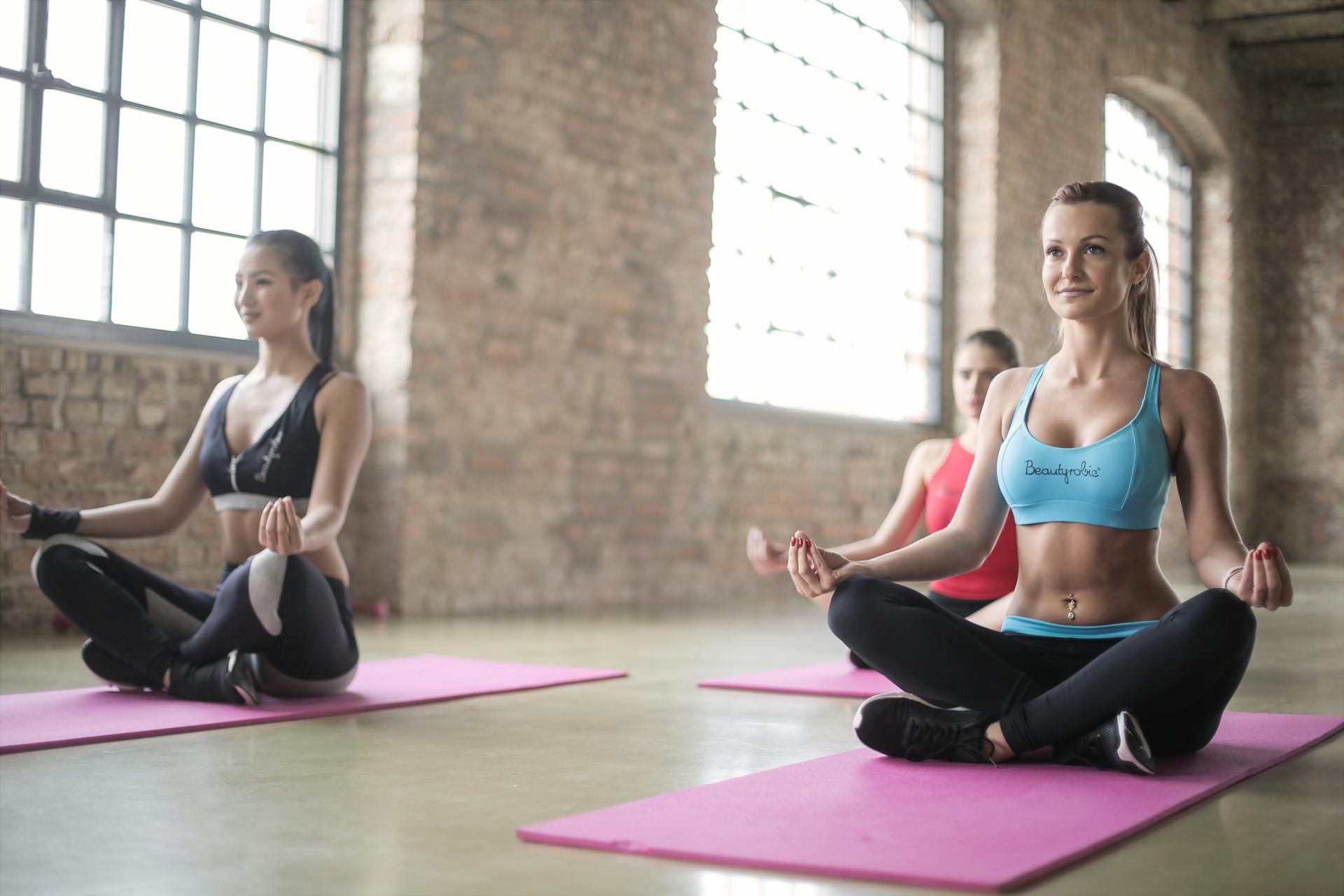Introduction
In today’s fast-paced world, stress and anxiety have become common companions for many people. With the constant demands of work, family, and social obligations, finding effective ways to manage mental health is crucial. One increasingly popular method is yoga. Known for its holistic approach to wellness, yoga not only enhances physical health but also offers profound mental health benefits. In this article, we’ll explore how yoga can help reduce stress and anxiety, providing a pathway to a calmer, more balanced life.
Understanding Stress and Anxiety
Stress and anxiety, though often used interchangeably, have distinct characteristics. Stress is the body’s response to any demand or threat, triggering the “fight or flight” response. Common symptoms include headaches, muscle tension, fatigue, and irritability. Anxiety, on the other hand, is a persistent feeling of apprehension or dread, often without a specific cause. It can lead to excessive worry, difficulty concentrating, and even physical symptoms like rapid heartbeat and sweating.
The impact of these conditions on daily life is significant. Chronic stress and anxiety can affect work performance, relationships, and overall quality of life. Long-term exposure can also lead to serious health issues, such as heart disease, depression, and a weakened immune system.
How Yoga Helps Reduce Stress
Yoga is a powerful tool for stress reduction. It combines physical postures (asanas), breathing exercises (pranayama), and meditation to create a state of relaxation and mindfulness. When practiced regularly, yoga helps activate the parasympathetic nervous system, which counteracts the stress response.
Physical Relaxation Techniques: Yoga postures are designed to release tension in the body. Gentle stretches and poses such as Child’s Pose, Forward Bend, and Corpse Pose promote relaxation and help the body recover from stress.
The Role of Breathing Exercises (Pranayama): Pranayama, or yogic breathing, is a fundamental component of yoga. Techniques like deep belly breathing, alternate nostril breathing, and Ujjayi breath slow down the heart rate, reduce blood pressure, and calm the mind. These exercises can be particularly effective in moments of acute stress, providing immediate relief.
Yoga Poses for Stress Relief
Certain yoga poses are especially beneficial for stress relief. Here are a few examples:
Child’s Pose (Balasana): This gentle resting pose calms the nervous system and provides a sense of security.
Forward Bend (Uttanasana): Bending forward helps to release tension in the back and shoulders, promoting relaxation.
Corpse Pose (Savasana): Often performed at the end of a yoga session, this pose involves lying flat on your back and focusing on your breath, allowing for deep relaxation.
Yoga for Anxiety Management
Anxiety management through yoga involves calming the mind and focusing on the present moment. Yoga encourages mindfulness, which helps break the cycle of anxious thoughts.
Calming the Mind with Meditation and Mindfulness: Meditation practices in yoga, such as focusing on the breath or repeating a mantra, help quiet the mind. Mindfulness techniques teach individuals to stay present, reducing the tendency to worry about the future or ruminate on the past.
The Connection Between Body and Mind in Yoga Practice: Yoga emphasizes the connection between physical movement and mental state. By paying attention to the body’s sensations and the rhythm of the breath, practitioners can achieve a state of mental clarity and peace.
Read More:
A Beginner’s Guide to Yoga: Essential Tips and Poses
Scientific Evidence Supporting Yoga for Mental Health
Numerous studies support the effectiveness of yoga in reducing stress and anxiety. Research shows that regular yoga practice lowers levels of cortisol, the stress hormone, and increases the production of serotonin, a neurotransmitter associated with happiness.
Studies and Research Findings: A study published in the Journal of Alternative and Complementary Medicine found that participants who practiced yoga regularly experienced significant reductions in anxiety and improvements in overall mood. Another study in the Journal of Clinical Psychology reported that yoga practice led to reduced symptoms of generalized anxiety disorder.
Testimonials and Real-Life Examples: Many individuals have found relief from stress and anxiety through yoga. Personal testimonials highlight how yoga has transformed their mental health, providing tools to cope with everyday challenges.
Incorporating Yoga into Your Daily Routine
Starting a yoga practice doesn’t have to be daunting. Here are some tips to help you get started:
Tips for Beginners to Start Practicing Yoga: Begin with simple poses and short sessions. There are plenty of online resources and classes that cater to beginners. Remember, consistency is key, so aim for a regular practice, even if it’s just a few minutes a day.
Creating a Consistent Practice that Fits Your Schedule: Find a time of day that works best for you, whether it’s in the morning to start your day or in the evening to unwind. Create a dedicated space for your practice, free from distractions.
Additional Benefits of Yoga for Mental Health
Beyond stress and anxiety relief, yoga offers additional mental health benefits:
Enhanced Mood and Emotional Regulation: Regular yoga practice boosts mood and helps regulate emotions, leading to a more balanced and positive outlook on life.
Improved Sleep Quality: Yoga can improve sleep patterns by promoting relaxation and reducing the physical tension that can interfere with sleep.
Conclusion
Yoga is a powerful practice that offers significant benefits for mental health. By incorporating yoga into your daily routine, you can reduce stress, manage anxiety, and enhance overall well-being. Whether you’re a beginner or an experienced practitioner, the journey of yoga is a personal one, providing tools for a healthier, more balanced life.

